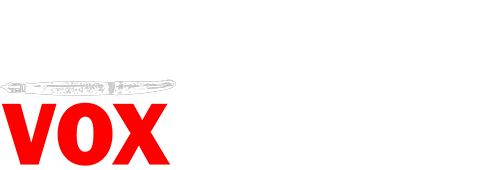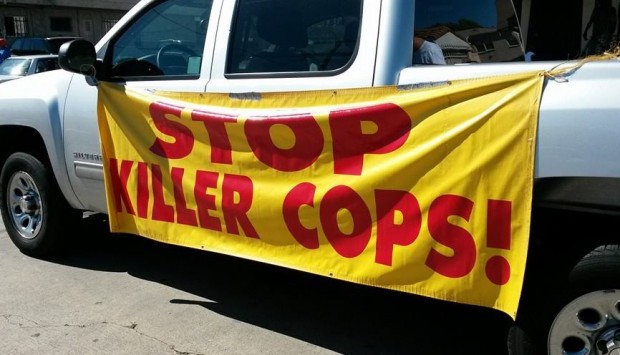 Joe Allen, author of a two-part article “It can’t happen here? Confronting the fascist threat in the United States in the 1930s” in the International Socialist Review, reviews a new book on the German-American Bund, a fascist group in the U.S. in the 1930s.
Joe Allen, author of a two-part article “It can’t happen here? Confronting the fascist threat in the United States in the 1930s” in the International Socialist Review, reviews a new book on the German-American Bund, a fascist group in the U.S. in the 1930s.
Socialist Worker
IN THE late 1930s, American fascists became a visible presence on the streets of the United States. “Everywhere the fascists and their fellow travelers seemed to be riding high,” recalled James Wechsler, a liberal journalist writing for the Nation in 1939.
Not since the worst days of the Great Depression–before the sweeping social reforms of Roosevelt’s presidency and the rise of the CIO–had the fascists felt that the tide had turned their way.
The worst days seemed to be back again in the late thirties. The Roosevelt “recession” threw unemployed levels back to where they were in 1933, while the labor movement went into a significant retreat and suffered terrible defeats. There was sharp right turn in U.S. politics with a hard anti-communist edge to it and a strong undercurrent of anti-Semitism.
This was the sewer that the fascists grew in: confusion, despair and bigotry bolstered by the victories abroad of Hitler and Franco. The American fascists were making something of a small comeback. But did they have a future?
Arnie Bernstein’s new book Swastika Nation: Fritz Kuhn and the Rise and Fall of the German-American Bund is a vividly written, colorful and even humorous account of the best known and organized fascist group of their era, and its portly, popinjay leader.
| REVIEW: BOOKS | |
| Arnie Bernstein, Swastika Nation: Fritz Kuhn and the Rise and Fall of the German-American Bund. St. Martin’s Press, 2013, 367 pages, $27.99. Why write a book now about a long ago and relatively small fascist group? Bernstein says that he was motivated by two events. “In August 2009 I went to see Quentin Tarantino’s film Inglorious Basterds…I left the theater wondering about real stories of Jews battling back Nazis during the Hitler era.” |
Thirty years earlier, Bernstein was a high school student when the National Socialist Party, one of the modern-day successors to Kuhn’s Bund, made repeated efforts to march in the Chicago suburb of Skokie–a city with a large community of Holocaust survivors.
“I was there waiting for them,” Bernstein told Rick Kogan during an interview on Chicago’s WGN radio. “It got me interested in what these people were about and Nazism in America.”
– – – – – – – – – – – – – – – –
BERNSTEIN’S BOOK begins with the high point of Bund visibility in the U.S. when on Washington’s birthday in February 1939 over 20,000 Bund members and their supporters took over Madison Square Garden in Manhattan with a Nuremberg-style Nazi rally. Outside the garden were 100,000 to 200,000 anti-Nazi demonstrators.
It was a shocking event held right in the center of America’s largest city, which also had one of the largest Jewish populations in the world. The rally made the front-page news across the globe. Fritz Kuhn, the Bund’s leader, became a household name overnight.
Bernstein then moves backward in time charting Kuhn’s life from its obscure origins to a machine gunner in the German Army during the First World War. After the war, he was a member of the Nazi Party in its early days and bragged (untruthfully) that he had participated in Hitler’s first attempt at seizing power, the so-called “Beer Hall Putsch.”
Kuhn, a chemist by trade, fled Germany after his former employee accused him of embezzling. In 1928, he arrived in the U.S. via Mexico, where he found employment in Henry Ford’s sprawling empire in Detroit.
Ford has both a ubiquitous and hidden role in the story of fascism in the U.S. The proverbial “man behind the curtain,” Ford in many ways introduced modern anti-Semitism in the U.S. through his newspaper, the Dearborn Independent.
The Independent published “The Protocols of the Elders of Zion,” which claimed to be a transcript of a secret Jewish plot to take over the world. It was the creation of the twisted imagination of the Czarist secret police and initially used it to attack the socialist movement in Russia.
The Dearborn Independent also published a series of exposés titled “The International Jew: The World’s Problem” that were later collected into a book. Ford allowed it be published without copyright, so “The International Jew” and the “Protocols” are in circulation to this day, and are mainstays of anti-Semitic and fascist movements around the world.
Ford hired many right-wing German exiles with Nazi sympathies who helped introduce Nazism into the U.S. During the 1920s through the mid-1930s, they were organized under a variety of names, including the Free Society of Teutonia and the Friends of the New Germany.
Kuhn was member of the Friends of the New Germany and rose to prominence in Detroit and the Midwest. After the Berlin government declared that no German citizen could be a member of the Friends, Kuhn reorganized the group as the German-American Bund. Kuhn became a U.S. citizen in 1934.
– – – – – – – – – – – – – – – –
IT’S EASY to mock Kuhn–Bernstein does it with great relish throughout his book, and Kuhn deserves it–but he also showed ambition and determination that others in his circle didn’t. He turned the Bund into a nationwide organization with accompanying businesses and youth camps.
It was never a very large outfit–as Bernstein makes clear–with estimates of roughly 5,000 to 10,000 members. Yet, because of its much more coherent ideology and military-like structure under Kuhn’s leadership–modeled on the Hiler’s Nazi Party–the members of the more homegrown “American” fascist groups, like the Silver Shirts and the Christian Front, gravitated toward it.
Kuhn’s rise to prominence didn’t go unnoticed or unopposed. Along the way, prominent newspaper columnists like Walter Winchell–the great-grandson of a rabbi–mocked, humiliated and tormented Kuhn. He denigrated the Bund, mocking them as the “Ratzis” among other things. Winchell also took to carrying a gun after two suspected Bundists attacked him one night.
Respectable members of the Jewish establishment in New York became so worried about the Nazis that they approached the very unrespectable members of the Jewish underworld to bring their rough methods to bear on Kuhn and the Bund.
Bernstein clearly loves this part of the story, and it’s some of the best writing in the book. It’s a screenwriter’s dream to have New York’s Meyer Lansky and his friends taking a lead pipe to Bundists’ heads. Or “Longy” Zwillman, king of the Newark mob, lending out his chief enforcer Nat Arno, a former boxing champ, and his so-called “Minutemen” for a little moonlighting as anti-fascist crusaders.
Arno specialized in throwing stink bombs into packed Bund meetings in Newark, and as hundreds of Bundists panicked and rushed out of the meeting hall coughing and chocking, his Minutemen thrashed them with lead pipes.
It’s worth mentioning that Warren Grover’s Nazis in Newark also covers this territory and is a good r
ead.
Even small-time Chicago hood Jack Rubenstein got in on the act and “cracked a few” Nazi heads, according to Bernstein. Jack Rubenstein later became infamous as Jack Ruby, the killer of Lee Harvey Oswald.
I’m sure that some of this or all of it will make it into a Hollywood movie some day.
– – – – – – – – – – – – – – – –
OTHER POLITICAL figures and groups that come in for praise in Bernstein’s Swastika Nation for their anti-Nazi activities are Manhattan District Attorney Thomas Dewey, whose prosecutorial skills put Kuhn in jail; New York Mayor Fiorello LaGuardia; the American Legion; the residents of Southbury, Conn.; and even, right-wing Texas Congressman Martin Dies.
It is here and a few other places that I have some problems with Bernstein’s book. One of the great strengths of Swastika Nation is its focus on Kuhn and the Bund–doing this allows for a full exposé of them and their activities–but it also has its weakness. One can read the book–and very uncharitably–declare “what’s the big deal.”
Bernstein consistently mocks Kuhn, and rightly so, as a “popinjay”–a conceited fool. He and his third-rate Nazi followers had their moment in the sun, but they were easily and swiftly dealt with by Dewey. Was there really a Nazi threat?
I think Bernstein should have widened his lens. The most threatening voice for fascism in the U.S. wasn’t Fritz Kuhn but Father Charles Coughlin, the “radio priest” who had an audience in the millions and whose support for fascism became more open in this era.
While Coughlin gets a couple of mentions in Bernstein’s book, he deserves far more attention. Coughlin’s Christian Fronters were a far more menacing threat on the streets of New York, Boston and other cities in the Northeast during the spring, summer and autumn of 1939 than Kuhn’s bund ever was. Donald Warren’s biography of Coughlin The Radio Priest makes this very clear.
When you add up the Bund activities with those of the Coughlin’s Christian Front and William Dudley Pelley’s Silver Shirts, and add to it Hitler’s conquests of Austria and the Sudetenland, and Franco’s victory in the Spanish Civil War, then one can understand why many people thought that there was a palpable fascist threat that had to be dealt with it in the U.S.
Lastly, I think Bernstein picks the wrong heroes in the fight against Kuhn and his Bundists too much of the time. Martin Dies may have held congressional hearings into the Bund’s activities that led to its eventual downfall, but he was also a Red-baiter and anti-New Dealer.
His leadership of HUAC, the House Committee on Un-American Activities, created the McCarthyite atmosphere in the late 1930s that groups like the Bund and others thrived in. The American Legion were strikebreakers and xenophobes of the first order. The founder of the American Legion compared himself favorably to the fascists of Italy.
The Communist Party, the Socialists, the Trotskyists of the Socialist Workers Party (SWP) mobilized thousands of their members and supporters through out the decades against a variety of fascist groups, including the Bund, but are given short shrift by Bernstein. I think this is a mistake.
After all, the SWP called the counter-demonstration to the Bund’s Washington birthday gala event, and worked feverishly to build a public protest to the fascists despite the wishes of virtually the entire political establishment of New York City, the Jewish Community and the Communist Party. It was the largest anti-fascist mobilization of the era in the U.S.
Despite this, I think Swastika Nation is good introduction to a frightening moment in U.S. history that has been largely forgotten.


More Stories
AT LEAST ONE OF THE COPS WHO KILLED EZELL FORD HAS STRUCK BEFORE
PEOPLES' MONDAY HONORS FALLEN VICTIMS IN NYC
PA STATE REP: 'A WHITE NATIONALIST…IS A LOT DIFFERENT THAN A WHITE SUPREMACIST'